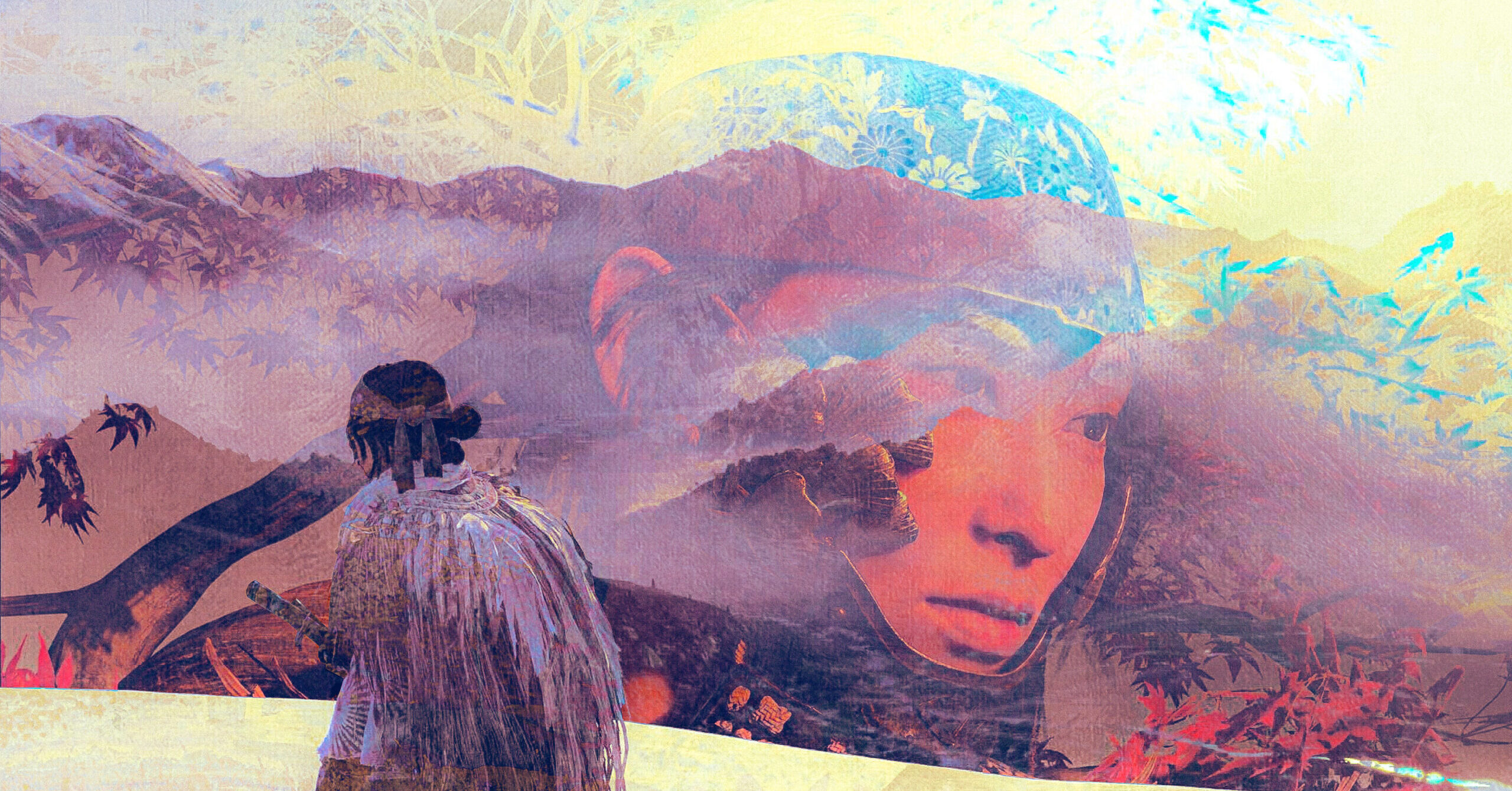
Five years after the release of Ghost of Tsushima, developer Sucker Punch Productions and publisher Sony Interactive Entertainment have unleashed another engrossing samurai adventure: Ghost of Yotei.
Ghost of Yotei, which was released on PlayStation 5 on Thursday, is a worthy successor to a game that instantly became one of the all-time great samurai titles upon its arrival in 2020. Set in 1603, more than 300 years after Jin Sakai’s fight against the Mongol invasion of Tsushima Island, Ghost of Yotei moves the series’ historical fiction farther north in Japan, to Ezo (modern-day Hokkaido). The spiritual sequel centers on Atsu (Erika Ishii), who witnessed her family’s murder by a gang of outlaws—known as the Yotei Six—when she was a child. Sixteen years after that fateful night, Atsu returns to Ezo to bring the Yotei Six to justice and avenge her loved ones.
Ghost of Yotei is a classic revenge tale with a simple, familiar premise. Yet it’s still masterfully executed, thanks to a combination of strong storytelling, compelling characters, and an enthralling lead performance from Ishii, who provided the voice and motion capture for Atsu. The game doesn’t reinvent the formula that was established in Ghost of Tsushima. Nor does it push the open-world genre forward as a whole. But it does everything that a good sequel should. Ghost of Yotei fine-tunes much of what made its predecessor such a captivating success while also delivering a more dynamic and engaging experience for players as they pursue Atsu’s quest for vengeance.
Yotei shrewdly improves the brutal yet beautiful combat that Tsushima introduced. In place of Tsushima’s four katana fighting stances, each designed to defeat specific enemies, Yotei features a full arsenal of new weapons for Atsu to deploy in battle. Rather than being limited to a single katana as their primary tool of destruction, players can now choose from duel-wielded katanas, yari, odachi, kusarigama, and even tanegashima—matchlock guns—to supplement the returning bows as ranged weapons. As a result, Yotei’s gameplay remains fresh as players progress through the main story, and Atsu learns the unique abilities and situational advantages that each weapon offers.
Like Tsushima before it, Yotei is a love letter to samurai cinema. Atsu may not be a true samurai herself, but she is the prototypical ronin: She traverses Ezo while using her blade to make a living—and fund her vengeful ambitions. Yotei pays homage to the filmmakers who inspired it. In addition to the returning Kurosawa mode, which transforms the game’s visuals to emulate the grainy, black-and-white stylings of the great Akira Kurosawa’s films, there are two new modes to experiment with.
Miike mode pulls the camera in closer during combat and dials up the blood (and mud) splatter to comical degrees in an attempt to mirror the intense, ultraviolent movies of Takashi Miike (13 Assassins). And Watanabe mode adds original lo-fi beats to relax/wander to, supervised by anime auteur Shinichiro Watanabe (Samurai Champloo). Although none of these options fully capture what makes each of these singular filmmakers so beloved and celebrated, the quirky filters for players to turn on and off as they explore the game’s expansive map speak to the developers’ efforts to let players customize their gaming experiences.
Yotei shines in its cinematic storytelling, just as its predecessor did, but it also seeks to refine the first game’s side quests and activities. Tsushima had its fair share of fun detours, particularly its character-driven missions and mythic tales that wove folklore into reward-based challenges. However, one of its few flaws was the repetitive and often mundane nature of the optional tasks Jin could complete on his journey. While writing haikus and following foxes to Inari shrines made for rich cultural details, the novelty of these experiences—along with the supplementary missions non-player characters offered—quickly faded due to their sheer volume and the lack of variation in the gameplay.
Many of the same activities are back (with minor tweaks to some), along with several new ones: shamisen playing and sumi-e painting, plus campsites for cooking a very steady diet of fish and mushrooms, a gambling minigame called Zeni Hajiki, and wolf dens where you join forces with your wolf companion to take down the Yotei Six’s abundant outposts. In this respect, Yotei’s improvements are more modest than in other areas, with that repetitive quality still plaguing the game despite its expanded suite of activities.
The best addition to the game’s ancillary adventures is bounty hunting, which has evolved from Tsushima’s memorable duels featured in the Six Blades of Kojiro quest. As Atsu works her way across Ezo’s regions, crossing off the names on her Yotei Six revenge list, she also has lucrative opportunities to take down a number of notorious criminals. The bounties typically end with challenging, scenic duels not unlike Tsushima’s, but this time, every target has a backstory, which often leads to more compelling confrontations.
Tsushima, which was rereleased for PS5 in 2021 as Ghost of Tsushima: Director’s Cut, was incredibly immersive, boasting gorgeous, diverse environments lush in natural splendor. Yotei recaptures that sense of wonder in a beautiful new region of Japan, and its visuals are accompanied by a majestic, shamisen-heavy score composed by Toma Otowa. And Sucker Punch made a concerted effort to achieve authenticity. The sequel has corrected a mistake of its predecessor by including a Japanese dub with lip-synching at launch, and Yotei employs a terrific Japanese cast led by prolific anime voice actor Ai Fairouz (JoJo’s Bizarre Adventure, Chainsaw Man). Yotei also incorporates some of the history of Ezo—which was annexed by Japan in 1869 and renamed Hokkaido—at a pivotal time when Tokugawa Ieyasu had just ended decades of civil war in Japan and formed the Tokugawa shogunate
This effort to do justice to the game’s setting is most evident in its thematic focus on colonialism and its inclusion of the local Ainu, an indigenous people from northern Japan who have faced centuries of oppression and marginalization under Japanese rule and are rarely seen in popular media. Atsu crosses paths with the Ainu and trades with them, recovers their lost artifacts, and learns their ways of life. As Sucker Punch co–creative director Nate Fox wrote in a blog post in June, the American studio broadened its roster of cultural advisers and dedicated research time in Hokkaido to learning more about Ainu culture and traditions.
Although Yotei might not be a notably ambitious follow-up to Tsushima, Sucker Punch hasn’t rested on its laurels. The game enhances an already well-crafted template and introduces a new story, protagonist, and world of characters that allow the sequel to stand on its own. Sucker Punch has found a winning formula in this anthology-style series, and if the studio can keep identifying new regions of Japan to explore and engaging stories to tell, the Ghost franchise can keep thriving.



